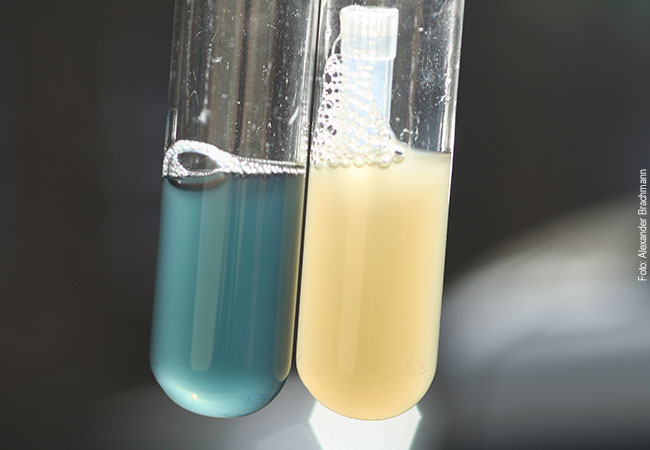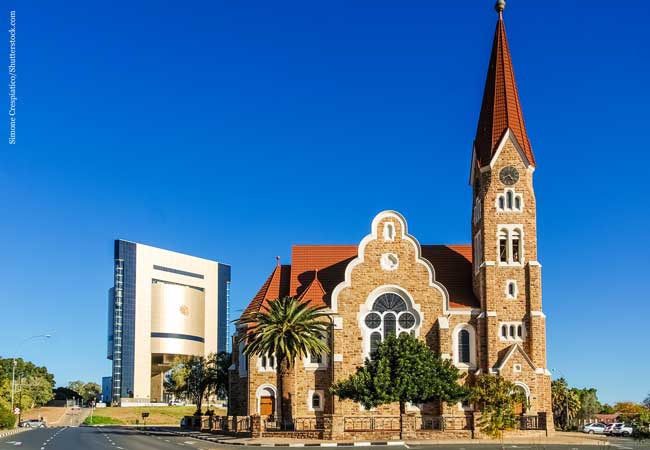
A new genetic engineering tool will contribute to simplifying microbial metabolite research
How do microbes evolve and how do they interact with their environment? How are the necessary metabolite compounds that form the basis for numerous agricultural, industrial and medical products obtained? These questions were previously difficult to study, but now a new genetic engineering tool promises to provide new insights: an international team of microbiologists and genomicists developed “CRAGE” – short for “chassis-independent recombinase assisted genome engineering”. Scientists from Goethe University and the DOE Environmental Molecular Sciences Laboratory (EMBSL) were also involved in the collaboration that was led by the US Department of Energy (DOE) Joint Genome Institute (JGI). The joint publication was recently published online in Nature Microbiology.
Secondary metabolites produced by microorganisms such as bacteria, viruses and fungi, are thusly named because their activities and functions aren’t essential for a microbe’s survival, yet they may give the organism an advantage in the face of certain environmental conditions. The ability to produce these metabolites are encoded by groups of genes called biosynthetic gene clusters (BGCs). These gene clusters easily exchange microbes through horizontal gene transfer, even if they are only distantly related. This rapid and widespread sharing allows microbes to adapt to changing environmental conditions by gaining new traits or losing traits that have become unimportant. Because the frequent swapping introduces mutations, horizontal gene transfer of BGCs drives the development of diverse compounds.
The processes of secondary metabolism were previously difficult to study because it is hardly possible to simulate natural conditions in the artificial environment of the laboratory. The new method CRAGE now helps scientists get around this roadblock.
“These metabolites are like a language that microbes use to interact with their environment and the living organisms within it. Since we aren’t familiar with this environment in detail, we also don’t understand the function of these metabolites,” said co-lead author Yasuo Yoshikuni, a scientist at the Department of Energy Joint Genome Institute. “We currently lack the technology to stimulate microbes into activating their BGCs and synthesizing the complete product – a cellular process that involves many steps.”
CRAGE is a highly efficient means of transplanting BGCs originating from one organism into many different potential production hosts simultaneously in order to identify microbial strains that are naturally capable of producing the secondary metabolite under laboratory conditions.
“CRAGE therefore
allows us to access these compounds much more readily than before,” said Helge Bode, co-lead author
from Goethe University and speaker
of the project area “Natural Products Genomics” at the LOEWE Centre for
Translational Biodiversity Genomics, which funded the research. “In several cases, it has already enabled us
to produce and characterise for the first time a compound of interest.”
CRAGE provides more than a technology to transfer microbial processes from one
species to another – scientists can now also observe concretely how these
connections work. So far, only theories exist.
“This is a landmark development, because with CRAGE we can examine how different organisms can express one gene network differently, and thus how horizontally transferred capabilities can evolve. The previous tools to do this are much more limited,” said co-author David Hoyt, a chemist at EMSL, which is located at the Pacific Northwest National Laboratory. Co-first author Jin Ke, a scientific engineering associate at JGI, added, “CRAGE can be used to engineer microbes for the production of proteins, RNAs, and other molecules with a huge range of applications.”
Next steps
So far, the team has successfully transferred BGCs into 30 diverse bacterial strains, and expect that it should work in many others, though the technique will likely need to be adapted for some species. Further research and product development are currently underway, but the technique is now available to research teams who utilize JGI (a DOE Office of Science User Facility) through pilot programs.
“Aside from a few very well-studied microbes, the so-called model organisms like E. coli, we don’t know whether a strain will have the skills needed to perform all the steps of BGC activation,” said Yoshikuni. “Hopefully with CRAGE, we can start to shift that paradigm – we can look into more wild species and find their properties that are more suitable for a production of products and medicines.”
This work was supported by the DOE Office of Science, the DFG (German Research Foundation), and the LOEWE Center for Translational Biodiversity Genomics in Frankfurt am Main. TBG Speaker Professor Axel Janke stressed: “Research results like this are in line with TBG’s goal of also focusing on application-related issues in basic genomic research. We are pleased with these pioneering insights and the options they open up for research on natural products.”
CRAGE is available for licensing through Berkeley Lab’s Intellectual Property Office and for collaborative research through JGI’s user programs.
Publication in Nature Microbiology:
Gaoyan Wang, Zhiying Zhao, Jing Ke, Yvonne Engel, Yi-Ming Shi, David Robinson, Kerem Bingol, Zheyun Zhang, Benjamin Bowen, Katherine Louie, Bing Wang, Robert Evans, Yu Miyamoto, Kelly Cheng, Suzanne Kosina, Markus De Raad, Leslie Silva, Alicia Luhrs, Andrea Lubbe, David W. Hoyt, Charles Francavilla, Hiroshi Otani, Samuel Deutsch, Nancy M. Washton, Edward M. Rubin, Nigel J. Mouncey, Axel Visel, Trent Northen, Jan-Fang Cheng, Helge B. Bode & Yasuo Yoshikuni:
„CRAGE enables rapid activation of biosynthetic gene clusters in undomesticated bacteria”
https://www.nature.com/articles/s41564-019-0573-8
The LOEWE Centre for Translational Biodiversity Genomics (TBG) is a joint research institution of the Senckenberg Society for Nature Research, the Goethe University Frankfurt, the Justus Liebig University Gießen and the Fraunhofer Institute for Molecular Biology and Applied Ecology IME. The centre is initially funded by the Hessian State Initiative for the Development of Scientific and Economic Excellence (LOEWE) and started operations in January 2018. The central focus is on expanding biodiversity research into the genomic basis of biological diversity. The findings are available for basic and applied research. The aim is also to combine basic research on the genomes of a broad variety of organisms with the development of applicable services and products.
Further information: https://tbg.senckenberg.de
Source: LOEWE Press Release








